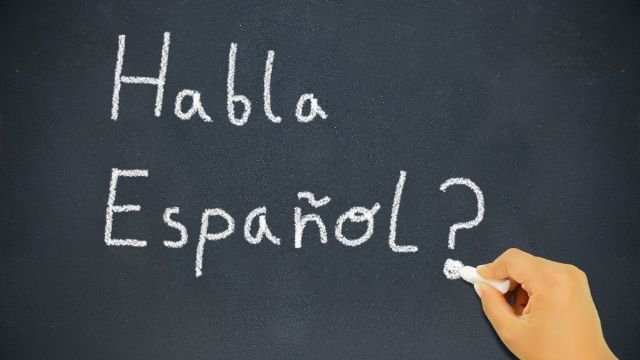There are numerous languages spoken today. There are more than 6,000 of these! It can be challenging to decide which one (or two) you wish to learn. Start with a language that’s simple for English speakers to learn if you’re studying a language for the first time. In this article, the top ten simplest languages in the world as of 2023 are addressed.
The accessibility of these languages to English speakers and students in general has led to their selection. Remember that ease of learning is arbitrary and can differ from person to person depending on personal learning preferences and language backgrounds. The ease of learning a new language can also be significantly influenced by the tools available and the drive to do so.
List of Most Easiest Languages in the World
| Rank | Language | Reasons for Ease of Learning |
| 1 | Spanish | Phonetic pronunciation and widespread resources. |
| 2 | French | Common Latin roots, predictable grammar. |
| 3 | Italian | Simple grammar, similar to other Romance languages. |
| 4 | Portuguese | Closely related to Spanish, simple pronunciation. |
| 5 | Dutch | Relatively straightforward grammar and vocabulary. |
| 6 | Norwegian | Regular spelling and straightforward grammar. |
| 7 | Swedish | Pronunciation is consistent with spelling. |
| 8 | Esperanto | Constructed language with a simple, logical structure. |
| 9 | Afrikaans | Simple grammar and phonetic spelling. |
| 10 | Indonesian | No verb conjugations and straightforward grammar. |
1. Spanish
Because of its simple pronunciation, regular grammatical rules, and plenty of learning tools, Spanish is sometimes touted as one of the easiest languages to learn. The widespread use of it around the world also offers lots of opportunities for practice. On average, it would take 24 weeks to learn. Spanish is widely spoken all over the world because it is the official language of 18 nations. Being phonetic gives the language a good edge because there are fewer syllable abnormalities. It is a romance language, as was already said, and because most of the words are Latin-based, English speakers can pronounce them with ease.
It is considered easy based on the following points:
- Phonetic Pronunciation: Spanish spelling and pronunciation are typically consistent, making it simpler for learners to comprehend and speak the language correctly.
- Widespread Resources: There are a ton of books, classes, and native speakers accessible to practice with all across the world.
2. French
Because of its Latin roots, French and English have many vocabulary-related commonalities. Although complicated, its syntax follows recognizable patterns, making it easier for learners to understand. On average, it would take 30 weeks to learn. More over 400 million people speak French from France to Madagascar, including the western parts of Canada, and it is the official language of 29 nations.
It is considered easy based on the following points:
- Latin Roots: English speakers have a greater familiarity with French vocabulary thanks to the language’s many Latin roots and cognates with English.
- Predictable Grammar: Although French grammar might be complicated, it maintains predictable patterns, which aids students in understanding its principles.
3. Italian
Italian is a Romance language like French, so it shares many words with English and other Romance languages. Its phonetic pronunciation and relatively basic syntax make it simpler for beginners to pick up. On average, it would take 24 weeks to learn.
It is considered easy based on the following points:
- Languages akin to Romance Languages: Italian has a strong connection to other Romance languages, making it simpler to learn another if you already speak one.
- Simple Grammar: When compared to other European languages, Italian grammar is typically more straightforward.
4. Portuguese
Spanish and Portuguese have similar grammar and vocabulary, making them near relatives. Although its pronunciation may initially seem difficult, once you get the hang of it, the language becomes more approachable. On average, it would take 24 weeks to learn. Portuguese has two distinct accents, Brazilian Portuguese and European Portuguese, although these two dialects share the same vocabulary and pronunciation, making it impossible to tell them apart. One must learn following their area of interest because learners can tell the difference between the two.
It is considered easy based on the following points:
- Similarity to Spanish: Because of the linguistic similarities, learning Portuguese is much simpler if you already know Spanish.
- Pronunciation: Once you get the hang of it, Portuguese pronunciation is simple and phonetic.
5. Dutch
Dutch has a vocabulary that is somewhat close to English and a reasonably simple grammar structure. In addition, a lot of Dutch speakers also speak English well, which might be helpful for students. On average, it would require 24 weeks to learn. Dutch is a Germanic language that is primarily spoken by people in the Netherlands and Belgium and is now spoken by over 25 million people worldwide. The Dutch language was reconstructed around 700 CE and is descended from the Western Frankish tongue.
It is considered easy based on the following points:
- Vocabulary Similarities: Dutch and English have many shared words and linguistic roots, making it simpler to learn the basics of the language’s vocabulary.
- Regular Grammar: The rules for Dutch grammar are fairly constant and regular.
6. Norwegian
Norwegian is renowned for its consistent spelling and uncomplicated grammar. Because the language is phonetically consistent, it is simpler to pronounce words correctly. On average, it would require 24 weeks to learn. Norwegian is a simple language with constant pronunciation and no conjugation rules, making it simple for beginners. The English language has the most common sentence pattern. Norwegian is a language spoken by over 5 million people, most of whom live in Norway, where it originated.
It is considered easy based on the following points:
- Regular Spelling: The regular patterns and phonetic spelling of Norwegian make it simpler to read and write.
- Simple Grammar: When compared to numerous other Germanic languages, the grammar is straightforward.
7. Swedish
Swedish grammar is rather simple, and pronunciation reflects spelling closely. Its ease of learning is also a result of its vocabulary’s resemblance to English. On average, it would take 24 weeks to learn. Swedish music is well-liked all around the world, yet only about 10 million people can speak it. Few speakers may be found in Finland, as the majority are in Sweden.
It is considered easy based on the following points:
- Phonetic Pronunciation: Swedish pronunciation is relatively easy to pronounce because it closely resembles the written form.
- Grammar Simplified: When compared to several other Germanic languages, this one has simpler grammar rules.
8. Esperanto
Esperanto is a made-up language intended to be simple and simple to learn. It has a logical structure, few irregularities, and a limited vocabulary that is consistent. On average, it would take 24 weeks to learn.
It is considered easy based on the following points:
- Intentionally Simple: Esperanto’s logical and regular syntax was designed particularly to make it simple to learn.
- Minimal Irregularities: It reduces irregular verbs and exceptions to a minimum.
9. Afrikaans
Compared to many other languages, Afrikaans has a more straightforward grammar, making it comparatively simple to learn. Because of its phonetic spelling, pronunciation is simple. On average, it would take 24 weeks to learn. While 7 million people are native speakers, there are over 10 million people who speak Afrikaans nowadays.
It is considered easy based on the following points:
- Simplified Grammar: When compared to numerous other Germanic languages, Afrikaans has a simpler grammar.
- Phonetic Spelling: Words are frequently spelt phonetically to make pronunciation easier.
10. Indonesian
The simple syntax and lack of verb conjugations in Indonesian make it unique. Furthermore, a great number of people speak it, giving many possibilities for practice. On average, it would take 24 weeks to learn.
It is considered easy based on the following points:
- No Verb Conjugation: The absence of sophisticated verb conjugation in Indonesian simplifies sentence structure.
- Simple Grammar: The language has an easy-to-understand sentence structure and few grammatical complications.
How to Start Learning Them?
Immersion in a language is the most effective method of learning it. Although it’s not always practical, there are thankfully alternative methods to join in. A wonderful place to start is by using the top language learning apps for each language. They enable you to talk in a matter of days and are practical and simple to use.
There are extra language learning methods and resources available if you want to achieve fluency. These include reading materials, classes, and even looking for an online native tutor. You may also search for top-notch podcasts to listen to while working out at the gym, walking to work, or checking out YouTube channels in your target language.
Conclusion
It’s crucial to remember that “ease” depends on the individual and might change. Additionally, factors including motivation, availability of resources, and personal learning preferences affect language acquisition. Although these languages are frequently thought of as being simpler for English speakers to learn, anyone can learn any language effectively with commitment and practice.

Rahul Kumar is a passionate educator, writer, and subject matter expert in the field of education and professional development. As an author on CoursesXpert, Rahul Kumar’s articles cover a wide range of topics, from various courses, educational and career guidance.




